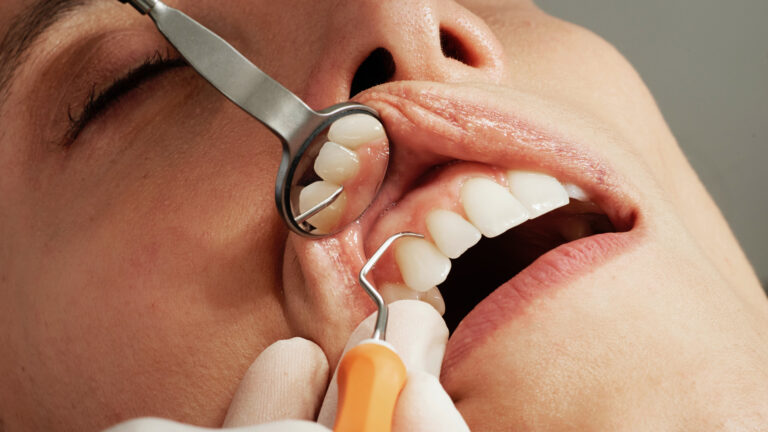When you are out on your weekly grocery run, do you read labels? One look at packaged food and you might notice names you can barely pronounce. BHA short for Butylated HydroxyAnisole (hard to pronounce, right?!) is commonly found in chips and preserved meat. Did you ever wonder; What is it? Why is it in my food? And is it even safe? If you have, congratulations! You are asking all the right questions!
It isn’t exactly news that the food additives MSG (Monosodium Glutamate) and high fructose corn syrup are among the worst offenders of processed foods. But even if you manage to eliminate these, there is a long list of common food additives that are best to avoid.
Did you know, the food industry continues to use toxic preservatives, despite the dangers posed to consumers?
And to make matters worse, the FDA is not scrutinizing these additives to the extent that toxicologists and scientists would like them to. To add fuel to the fire, the food industry has a notorious reputation of hiding the real chemical name from plain sight by using alternative names.
At Innovative Medicine, we believe that reading labels will help you as consumers to make educated choices. Here, we’ve compiled a list of 10 unhealthy food additives commonly found in processed food. Let’s explore what these additives are, which foods they are found in, and why they may be unsafe for consumption.
10 Toxic Food Additives to Avoid
1. Carrageenan
Why it is used: Plant-based thickener, emulsifier, and preservative
Where it is used: A fat substitute in vegan dairy products. Certain brands of almond milk, coffee creamers, vegan cheese, cottage cheese, chocolate milk, etc.
Harmful health effects: Intestinal ulcers and inflammation
2. Propylene Glycol
Why it is used: A solvent carrier that uniformly distributes solvent across the food product. Also acts as a stabilizer and emulsifier. It helps keep bread products moist and increases shelf life.
Where it is used: Bread, baking ingredients like cakes, pastries, puddings, frosting, salad dressings, ready-to-eat soups
Harmful health effects: Toxic to the liver and can result in compromised kidney function
3. Propyl Gallate
Why it is used: Usually used in combination with BHA/BHT for its preservative properties
Where it is used: Corn, meat products, mayonnaise, microwavable popcorn, frozen meals, chewing gum
Harmful health effects: Kidney, liver toxicity, carcinogenic
4. Phthalates
Why it is used: These aren’t additives, but phthalates are plastics found in food packaging. It leaches into food upon prolonged contact and is extremely toxic.
Where it is used: Kraft mac and cheese, cheeseburgers
Harmful health effects: Health officials have claimed that exposure to phthalates through food is a silent epidemic in the US. Consumption via food has been linked to ADHD and neurodevelopmental problems in children.
5. Brominated Vegetable Oil (BVO)
Why it is used: Emulsifier and clouding agent
Where it is used: Sports drinks like Gatorade, carbonated beverages such as Mountain Dew and Dr. Pepper
Harmful health effects: Bromine in BVO is a poisonous chemical that causes gastrointestinal symptoms, brain fog, and neurodegenerative disorders.
See how we can help you restore complete health of body, mind & spirit.
6. Nitrates and Nitrites
Why it is used: Commonly used to preserve flavor, taste, color, and shelf life of processed meats, cheese, and fish.
Where it is used: Packaged bacon, hot dogs, salami
Harmful health effects: Nitrites get converted to nitrosamines, a known carcinogen. Prolonged exposure was reported to cause gastrointestinal tract irritation and cancer.
7. Sodium Benzoate
Why it is used: Flavor enhancer, preservative, coloring agent
Where it is used: Carbonated drinks and acidic foods like fruit juices, salad dressings.
Harmful health effects: In an acidic environment of carbonated drinks, the sodium benzoate converts to benzene metabolites. This was found to cause hyperactivity in young children and is a known carcinogen. The benzene metabolites derived from this chemical have been tested by the IARC (International Agency for Research on Cancer) and recognized to be cancer-causing.
8. Potassium Bromate
Why it is used: To enhance texture, adds volume, and promotes rising of dough
Where it is used: Pizza doughs, baking products
Harmful health effects: Bromate, being a carcinogen has been banned in most countries except for the US and Japan.
9. BHA/BHT
Why it is used: Phenolic antioxidants that prevent edible oils and fat-containing foods from going rancid. A preservative that protects these foods from oxidative damage
Where it is used: Butter, margarine, lard, shortenings, chewing gum, and chips
Harmful health effects: Carcinogenic to both animals and humans
10. Parabens
Why it is used: Preservative to prevent mold and yeast growth in foods
Where it is used: Beer, frozen dairy products, jams, jellies, pickles
Harmful health effects: Endocrine disruptor and potentially linked to breast cancer
Biological Toxicity: What is a Toxic Burden?
The human body has molecular pathways in place to eliminate any ingested, absorbed or inhaled toxins. When in good health, these pathways function to their full potential. A sluggish elimination system adds to toxic burden wherein waste products fail to be completely removed from the body.
Toxic buildup of environmental toxins (EMF pollution, food additives, heavy metals), emotional toxins (negative thought spirals), and biochemical toxins (invading pathogens) are believed to be at the root cause of all disease.
The Barrel Analogy of Toxicity
Derived from European Biological Medicine, the barrel analogy of toxicity is a model that describes how the body behaves under toxic stress. Per this theory, the body is analogous to a barrel in how it handles toxic overload. The organs of elimination are loaded up with toxins to their maximum capacity after which they spill over into the circulation and further propagate illness and disease.
What is Detoxification Really?
Detoxification or “detoxing” is widely understood to be a mere liver cleanse with celery (or other) juice or detox supplements. Yet a true full-body cleanse is achieved when toxins are successfully flushed out from both organs of elimination and circulation. And this is only half the battle.
We must then upregulate the organs of elimination (the liver, kidneys, and lymphatic system) and recover them to full functionality for sustained, ongoing natural detoxification. Innovative Medicine’s flagship clinic NYCIM offers a wide array of therapies to promote full-body detoxification. We’ve listed two of these below.
Oxidative Therapies
These combination therapies heal and detox simultaneously. A high oxygen environment provides powerful antioxidants to the body’s inherent redox pathways. The drag on the elimination channels due to toxic overload is removed — allowing them to function efficiently.
Ozone Therapy
Chronic poor oxygenation is the root cause of a number of diseases. When ozone (O3) is supplied, the body amps up its oxidative ability. With improved oxygenation, toxins are broken down into carbon dioxide which improves their elimination from the body. Low oxygen in the body results in dysfunctional elimination pathways. Learn more about how to do a full body detox the right way at NYCIM.
Defying Nature with Food Additives, But at What Cost?
Food additives are essentially chemicals added to increase shelf-life and flavor in your food.
But if you think about it, these chemicals do not naturally exist in nature. It’s completely normal for food to go bad with time. In nature, microbial ecosystems are meant to harmoniously coexist with us and consume the same foods as us.
By adding preservatives to food, we are going against the normal order of nature. And in doing so we risk overburdening our organs of elimination. If you’ve knowingly or unknowingly consumed processed food, there is a good chance that your elimination system has taken the brunt of it all.
As we’ve seen, food additives pose a very real threat to our overall health, as they burden the organs of elimination, and disrupt the detoxification process. If you have reason to believe that you have a toxic burden, write to us at Innovative Medicine. Remember that we are here to help you on your journey to better health and wellbeing.
* Disclaimer: The statements made in this article have not been evaluated by the Food and Drug Administration. Any products or treatments mentioned are not intended to diagnose, treat, cure, or prevent any disease. Please consult a licensed medical practitioner for medical advice. At Innovative Medicine, we believe in transparency. We want you to know that we may participate in affiliate advertising programs pertaining to products mentioned herein.





